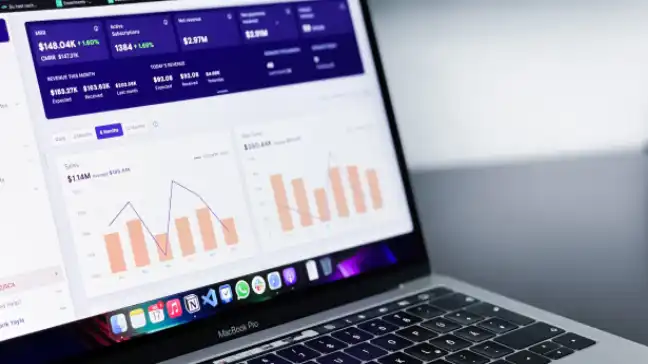Introduction
In big data, choosing the right data structure is crucial for efficient data processing and analytics. Apache Spark offers three core abstractions: RDD vs DataFrame vs Dataset. Each has unique advantages and use cases, making it suitable for different scenarios in data engineering. As data engineers, understanding the differences between these abstractions and knowing when to use each can significantly impact the performance and scalability of your data processing tasks. This article delves into the differences between RDDs, DataFrames, and Datasets, exploring their respective features, advantages, and ideal use cases. By understanding these distinctions, data engineers can make informed decisions to optimize workflows, leveraging Spark’s capabilities to handle large-scale data efficiently and flexibly. Let’s get started on RDDs vs. Dataframes vs. Datasets.
Table of contents
What are RDDs?
RDDs, or Resilient Distributed Datasets, are Spark’s fundamental data structure. They are a collection of objects capable of storing data partitioned across the cluster’s multiple nodes and also allowing parallel processing.
It is fault-tolerant if you perform multiple transformations on the RDD and then, for any reason, any node fails. In that case, the RDD is capable of recovering automatically.

There are 3 ways of creating an RDD:
- Parallelizing an existing collection of data
- Referencing to the external data file stored
- Creating RDD from an already existing RDD
When to Use RDDs?
We can use RDDs in the following situations-
- When we want to do low-level transformations on the dataset.
- It does not automatically infer the schema of the ingested data, we need to specify the schema of each and every dataset when we create an RDD.
How to Use RDD?
Creating RDDs:
- From a Collection
from pyspark import SparkContext
sc = SparkContext("local", "example")
data = [1, 2, 3, 4, 5]
rdd = sc.parallelize(data)
- From an External Dataset (e.g., a text file):
rdd = sc.textFile("path/to/textfile.txt")Transformations:
Transformations are operations on RDDs that return a new RDD. Examples include map(), filter(), flatMap(), groupByKey(), reduceByKey(), join(), and cogroup().
# Example: map and filter
dd2 = rdd.map(lambda x: x * 2)
rdd3 = rdd2.filter(lambda x: x > 5)
Actions:
Actions are operations that return a result to the driver program or write to the external storage. Examples include collect(), count(), take(), reduce(), and saveAsTextFile().
# Example: collect and count
result = rdd3.collect()
count = rdd3.count()Persistence:
You can persist (cache) an RDD in memory using persist() or cache() methods that are useful when you need to reuse an RDD multiple times.
rdd3.cache()Use Cases of RDD
- Iterative Machine Learning Algorithms: RDDs are particularly useful for algorithms that require multiple passes over the data, such as K-means clustering or logistic regression. Their immutability and fault tolerance are beneficial in these scenarios.
- Data Pipeline Construction: RDDs can be used to build complex data pipelines where data undergoes several stages of transformations and actions, such as ETL (Extract, Transform, Load) processes.
- Interactive Data Analysis: RDDs are suitable for interactive analysis of large datasets due to their in-memory processing capabilities. They allow users to prototype and test their data analysis workflows quickly.
- Unstructured and Semi-structured Data Processing: RDDs are flexible enough to handle various data formats, including JSON, XML, and CSV, making them suitable for processing unstructured and semi-structured data.
- Streaming Data Processing: With Spark Streaming, you can use RDDs to process real-time data streams, enabling use cases such as real-time analytics and monitoring.
- Graph Processing: RDDs can be used with GraphX, Spark’s API for graph processing, to perform operations on large-scale graph data, like social network analysis.
Example of RDD Operations
Here’s a more comprehensive example demonstrating RDD operations:
from pyspark import SparkContext
sc = SparkContext("local", "RDD example")
# Load data from a text file
lines = sc.textFile("data.txt")
# Split each line into words
words = lines.flatMap(lambda line: line.split(" "))
# Count the occurrences of each word
wordCounts = words.map(lambda word: (word, 1)).reduceByKey(lambda a, b: a + b)
# Filter words with counts greater than 5
filteredWordCounts = wordCounts.filter(lambda pair: pair[1] > 5)
# Collect the results
results = filteredWordCounts.collect()
# Print the results
for word, count in results:
print(f"{word}: {count}")
Benefits of RDD
- Low-level Transformation Control: RDDs provide fine-grained control over data transformations, allowing for complex custom processing.
- Fault-tolerance: RDDs are inherently fault-tolerant, automatically recovering from node failures through lineage information.
- Immutability: RDDs are immutable, which ensures consistency and simplifies debugging.
- Flexibility: Suitable for handling unstructured and semi-structured data, offering versatility in processing diverse data types.
Limitations of RDD
- Lack of Optimization: RDDs lack built-in optimization mechanisms, requiring developers to optimize code for performance manually.
- Complex API: The low-level API can be more complicated and cumbersome, making development and debugging more challenging.
- No Schema Enforcement: RDDs do not enforce schemas, which can lead to potential data consistency issues and complicate the processing of structured data.
What are Dataframes?
It was introduced first in Spark version 1.3 to overcome the limitations of the Spark RDD. Spark Dataframes are the distributed collection of data points, but here, the data is organized into named columns. They allow developers to debug the code during the runtime, which was not allowed with the RDDs.
Dataframes can read and write data into formats like CSV, JSON, AVRO, HDFS, and HIVE tables. They are already optimized to process large datasets for most pre-processing tasks, so we do not need to write complex functions independently.
Let’s see how to create a data frame using PySpark.
When to Use DataFrames?
DataFrames in Apache Spark are highly versatile. It would be best if you considered using DataFrames when:
- Structured Data: When working with structured or semi-structured data (e.g., CSV, JSON, Parquet files), DataFrames are highly efficient due to their schema and optimization capabilities.
- SQL-like Operations: If you need to perform SQL-like queries, DataFrames are ideal because they provide an API similar to relational databases, enabling complex operations like joins, aggregations, and filtering.
- Optimizations: DataFrames benefit from Spark’s Catalyst optimizer, which can optimize query plans for better performance. This includes optimizations like predicate pushdown, column pruning, and advanced code generation.
- Ease of Use: DataFrames offer a more user-friendly API than RDDs, with higher-level abstractions that simplify coding and debugging.
- Integration with BI Tools: DataFrames are more appropriate for applications requiring integration with business intelligence tools and visualization libraries due to their compatibility with tools like Tableau and Power BI.
- Performance: DataFrames are generally faster and more memory-efficient than RDDs due to optimizations and internal mechanisms like Tungsten for physical execution.
Also Read: A Beginners’ Guide to Data Structures in Python
How Does DataFrames Work?
DataFrames are distributed collections of data organized into named columns, similar to tables in a relational database. Here’s a high-level overview of how they work:
- Schema: Each DataFrame has a schema that defines its structure, including column names and data types. This schema allows Spark to optimize operations on the DataFrame.
- API: DataFrames provide a rich API for data manipulation, including methods for filtering, aggregation, joining, and more. This API is available in various languages, including Python, Scala, and Java.
- Catalyst Optimizer: The Catalyst optimizer analyzes DataFrame operations and generates optimized execution plans. It can perform logical optimizations (e.g., predicate pushdown, column pruning) and physical optimizations (e.g., better join strategies).
- Tungsten Execution Engine: DataFrames leverage the Tungsten execution engine, which uses whole-stage code generation to produce optimized JVM bytecode for faster execution and reduced memory overhead.
Use Cases of DataFrames
- Data Exploration and Cleaning: DataFrames are excellent for initial data exploration and cleaning, allowing users to quickly understand data distributions, handle missing values, and perform transformations.
- Data Aggregation and Reporting: Use DataFrames to perform aggregations and generate reports. Operations like
groupBy(),agg(), andpivot()are optimized for performance. - Machine Learning: DataFrames integrates well with Spark MLlib, enabling pre-processing, feature engineering, and training machine learning models. The structured nature of DataFrames makes them suitable for pipeline workflows.
- ETL (Extract, Transform, Load): DataFrames are ideal for building ETL pipelines because they support reading and writing to various data sources (e.g., HDFS, S3, JDBC) and applying transformations.
- Streaming Data Processing: With Structured Streaming, DataFrames can process real-time data streams, making them suitable for real-time analytics and monitoring applications.
- Interoperability with BI Tools: DataFrames can serve data to BI tools, allowing easy integration and data visualization.
Example of DataFrame Operations
Here is a comprehensive example demonstrating DataFrame operations:
from pyspark.sql import SparkSession
# Initialize SparkSession
spark = SparkSession.builder.appName("DataFrame Example").getOrCreate()
# Load data from a CSV file
df = spark.read.csv("path/to/data.csv", header=True, inferSchema=True)
# Display the schema
df.printSchema()
# Show the first few rows
df.show()
# Filter rows where a column value meets a condition
filtered_df = df.filter(df["column_name"] > 100)
# Group by a column and calculate aggregate statistics
grouped_df = df.groupBy("group_column").agg({"agg_column": "mean", "agg_column": "count"})
# Join two DataFrames
other_df = spark.read.csv("path/to/other_data.csv", header=True, inferSchema=True)
joined_df = df.join(other_df, df["key_column"] == other_df["key_column"], "inner")
# Write the result to a new CSV file
joined_df.write.csv("path/to/output.csv", header=True)
# Stop the SparkSession
spark.stop()Benefits of DataFrames
- High-level Abstraction: DataFrames provide a higher-level API with SQL-like capabilities, simplifying complex data operations.
- Catalyst Optimizer: Built-in optimization through the Catalyst optimizer ensures efficient execution of queries.
- Schema Enforcement: DataFrames have an inherent schema, making them ideal for structured and semi-structured data processing.
- Ease of Use: The user-friendly API and integration with SQL make DataFrames easy to use and accessible for data manipulation tasks.
- Compatibility with BI Tools: DataFrames are compatible with business intelligence tools like Tableau and Power BI, facilitating data visualization and reporting.
Limitations of DataFrames
- Type Safety: DataFrames do not offer compile-time type safety, which can lead to runtime errors.
- Limited Functional Programming: DataFrames support functional programming constructs but are less flexible than RDDs for certain custom transformations.
- Performance Overhead: DataFrames might introduce some performance overhead compared to RDDs due to the higher-level abstractions and optimizations.
Also Read: 10 Ways to Create Pandas Dataframe
What are Datasets?
Spark Datasets is an extension of the Dataframes API that benefits from RDDs and Datasets. It is fast and provides a type-safe interface. Type safety means that the compiler will validate the data types of all the columns in the dataset while compilation only and will throw an error if there is any mismatch in the data types.

Users of RDD will find it somewhat similar to code, but it is faster than RDDs. It can efficiently process both structured and unstructured data.
We have not yet created Spark Datasets in Python. The dataset API is available only in Scala and Java.
When to Use Datasets?
Here are the scenarios where you should consider using Datasets:
- Type Safety: When you need compile-time type safety to avoid runtime errors, Datasets are preferable. They offer strong typing, which helps catch errors early in development.
- Functional Programming: If you want to use the full power of functional programming with lambda functions and transformations, Datasets allow for a more expressive coding style than data frames.
- Complex Data Structures: When dealing with complex data structures and custom objects, Datasets offer more flexibility than DataFrames, which are limited to tabular data.
- Performance Optimizations: Like DataFrames, Datasets benefits Spark’s Catalyst optimizer and Tungsten execution engine. These provide performance optimizations while allowing you to work with strongly typed objects.
How Do Datasets Work?
Datasets combine the best features of RDDs and DataFrames. They are distributed collections of data that are strongly Here’s Here’s a breakdown of how they work:
- Schema and Types: Datasets have a schema similar to DataFrames but maintain type information about the objects they contain. This dual nature allows Spark to perform type-safe operations and optimizations.
- API: Datasets provide a rich API that includes high-level DataFrame operations and low-level RDD-like transformations and actions. This allows you to use SQL-like queries alongside functional programming constructs.
- Catalyst Optimizer: The Catalyst optimizer in Spark analyzes Dataset operations to generate optimized execution plans, just as it does for DataFrames. This includes logical optimizations like predicate pushdown and physical optimizations for efficient execution.
- Tungsten Execution Engine: Datasets leverage the Tungsten execution engine for efficient in-memory computation, providing performance benefits such as reduced garbage collection overhead and optimized bytecode generation.
Use Cases of Datasets
- Type-safe Data Processing: Datasets are ideal for applications where type safety is crucial, such as complex ETL pipelines or data transformation workflows, where errors must be caught at compile time rather than runtime.
- Complex Business Logic: When your application involves complex business logic that benefits from functional programming paradigms, Datasets offer the flexibility to use map, flatMap, filter, and other transformations with custom objects.
- Interoperability with Java and Scala: Datasets are particularly useful in Java and Scala applications where you can use the language’s type system to create and manipulate complex data structures.
- Optimized Aggregations and Joins: Similar to DataFrames, Datasets are well-suited for performing aggregations, joins, and other relational operations with the added benefit of type safety.
- Machine Learning Pipelines: Spark MLlib can use datasets to create machine learning pipelines, where type safety helps ensure that data transformations and feature engineering steps are correctly applied.
Example of Dataset Operations
Here’s an example demonstrating Dataset operations in Scala:
import org.apache.spark.sql.{Dataset, SparkSession}
// Initialize SparkSession
val Spark = SparkSession.builder.appName("Dataset Example").getOrCreate()
// Define a case class for type safety
case class Person(name: String, age: Int)
// Load data into a Dataset
import spark.implicits._
val data = Seq(Person("Alice", 25), Person("Bob", 29), Person("Charlie", 32))
val ds: Dataset[Person] = spark.createDataset(data)
// Display the schema
ds.printSchema()
// Show the first few rows
ds.show()
// Filter the Dataset
val adults = ds.filter(_.age > 30)
// Perform an aggregation
val averageAge = ds.groupBy().avg("age").first().getDouble(0)
// Join Datasets
val otherData = Seq(Person("David", 35), Person("Eve", 28))
val otherDs = spark.createDataset(otherData)
val joinedDs = ds.union(otherDs)
// Write the result to a Parquet file
joinedDs.write.parquet("path/to/output.parquet")
// Stop the SparkSession
spark.stop()Benefits of Datasets
- Type Safety: Datasets provide compile-time type safety, ensuring data type consistency and reducing runtime errors.
- High-level Abstraction with Type Safety: Datasets combine the high-level API of DataFrames with the type-safe capabilities of RDDs.
- Catalyst Optimizer: Like DataFrames, Datasets benefit from the Catalyst optimizer, enhancing performance through query optimizations.
- Functional Programming: Datasets support rich functional programming constructs, making them suitable for complex data transformations and business logic.
- Interoperability with Java and Scala: Datasets are particularly advantageous for applications written in Java and Scala, leveraging strong typing and functional paradigms.
Limitations of Datasets
- Language Support: Datasets are not yet available in Python, limiting their use to Java and Scala developers.
- Complexity: The dual nature of Datasets (combining features of RDDs and DataFrames) can introduce complexity, requiring a deeper understanding of both paradigms.
- Performance Overhead: While optimized, the additional type checks and schema enforcement can introduce some performance overhead compared to RDDs.
RDDs vs. Dataframes vs. Datasets
Let us get started on the comparison of RDDs vs. Dataframes vs. Datasets.
| Feature/Aspect | RDDs (Resilient Distributed Datasets) | DataFrames | Datasets |
| Data Representation | Distributed collection of data elements without any schema. | Distributed collection organized into named columns. | Extension of DataFrames with type safety and object-oriented interface. |
| Optimization | No in-built optimization; requires manual code optimization. | Uses Catalyst optimizer for query optimization. | Uses Catalyst optimizer for query optimization. |
| Schema | Schema must be manually defined. | Automatically infers schema of the dataset. | Automatically infers schema using the SQL Engine. |
| Aggregation Operations | Slower for simple operations like grouping data. | Provides easy API and performs faster aggregations than RDDs and Datasets. | Faster than RDDs but generally slower than DataFrames. |
| Type Safety | No compile-time type safety. | No compile-time type safety. | Provides compile-time type safety. |
| Functional Programming | Supports functional programming constructs. | Supports functional programming but with some limitations compared to RDDs. | Supports rich functional programming constructs. |
| Fault Tolerance | Inherently fault-tolerant with automatic recovery through lineage information. | Inherently fault-tolerant. | Inherently fault-tolerant. |
| Ease of Use | Low-level API can be complex and cumbersome. | Higher-level API with SQL-like capabilities; more user-friendly. | Combines high-level API with type safety; more complex to use. |
| Performance | Generally slower due to lack of built-in optimizations. | Generally faster due to Catalyst optimizer and Tungsten execution engine. | Optimized, but may have slight performance overhead due to type checks and schema enforcement. |
| Use Cases | Suitable for unstructured/semi-structured data, custom transformations, iterative algorithms, interactive analysis, and graph processing. | Ideal for structured/semi-structured data, SQL-like queries, data aggregation, and integration with BI tools. | Best for type-safe data processing, complex business logic, and interoperability with Java/Scala. |
| Language Support | Available in multiple languages, including Python. | Available in multiple languages, including Python. | Available only in Java and Scala. |
| Interoperability | Flexible but less optimized for interoperability with BI tools. | Highly compatible with BI tools like Tableau and Power BI. | Strong typing makes it suitable for Java/Scala applications. |
| Complexity | Requires deeper understanding of Spark’s core concepts for effective use. | Simplified API reduces complexity for common tasks. | Combines features of RDDs and DataFrames, adding complexity. |
Conclusion
Understanding the differences between RDD vs Dataframe vs Datasets is crucial for data engineers working with Apache Spark. Each abstraction offers unique advantages that can significantly impact the efficiency and performance of data processing tasks. For data engineers, the choice between RDDs, DataFrames, and Datasets should be guided by the specific requirements of the data processing tasks. Whether handling unstructured data with RDDs, leveraging the high-level API of DataFrames for structured data, or utilizing the type-safe, optimized operations of Datasets, Apache Spark provides robust tools to handle large-scale data efficiently and effectively. Understanding and using these abstractions can significantly enhance the scalability and performance of data engineering workflows.
Frequently Asked Questions
A. RDD (Resilient Distributed Dataset) is the fundamental data structure in Apache Spark, representing an immutable distributed collection of objects. It offers low-level operations and lacks optimization benefits provided by higher-level abstractions.
Conversely, DataFrames are higher-level abstractions built on top of RDDs. They provide structured and optimized distributed data processing with a schema, supporting SQL-like queries and various optimizations for better performance.
A. RDDs are useful when you require low-level control over data and need to perform complex custom transformations or access RDD-specific operations not available in DataFrames. Additionally, RDDs are suitable when working with unstructured data or when integrating with non-Spark libraries that expect RDDs as input.
A. Spark RDDs (Resilient Distributed Datasets) are immutable to ensure consistency and fault tolerance. Immutability means once an RDD is created, it cannot be changed. This property allows SpaSpark to keep track of the lineage of transformations applied to the data, enabling efficient recomputation and recovery from failures, thus providing robustness and simplifying parallel processing.
A. Datasets are faster than RDDs because of Spark’s Catalyst optimizer and Tungsten execution engine. The Catalyst optimizer performs advanced query optimizations like predicate pushdown and logical plan optimizations, while Tungsten improves physical execution through whole-stage code generation and optimized memory management. This leads to significant performance gains over the more manual and less optimized RDD operations.






really nice article thanks dude
Very informative explanation the way you prepared article Thank you..! Suggestion: Add code snippets/syntax along the description.